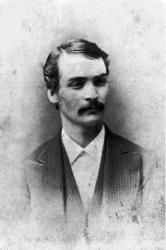Planning worship?
Check out our sister site, ZeteoSearch.org,
for 20+ additional resources related to your search.
- |
User Links
Search Results
O What Joy Will Be Ours
Author: E. G. W. Wesley Appears in 2 hymnals First Line: O what joy would be ours as we watch and pray Refrain First Line: O what joy! O what joy! Used With Tune: [O what joy would be ours as we watch and pray]
O What Joy Will Be Ours
[O what joy would be ours]
Appears in 2 hymnals Composer and/or Arranger: Chas. H. Gabriel Incipit: 12355 55516 53455 Used With Text: O What Joy Will Be Ours
[O what joy would be ours]
O What Joy Will Be Ours
Author: E. G. W. Wesley Hymnal: Great Revival Hymns No. 2 #2 (1913) First Line: O what joy would be ours, as we watch and pray Refrain First Line: O what joy! O what joy! Lyrics: 1 O what joy would be ours, as we watch and pray,—
Did we think, often times, of the coming morn—
Of the morn which shall follow this life’s brief day,
When all night shall be lost, in one radiant dawn.
Refrain:
O what joy! O what joy!
When our loved ones we shall greet!
O what joy! O what joy,
When our Savior we shall meet.
2 O what joy would be ours ‘mid the cares of life,
Did we think, often times, of that tearless home,
Where no sorrow nor pain, where no sin nor strife,
Shall be ours when no longer from Christ we roam. [Refrain]
3 O what joy would be ours when our hopes deceive,
Did we think, often times, of that Faithful Friend,
Who will never forsake but at last receive
E’en the weakest and poorest, when life doth end. [Refrain]
4 O what joy would be ours as we mourn and weep,
Did we think, often times, of the loved and blest
In their mansions above, where they vigil keep,
As they wait for our coming to heaven’s rest. [Refrain]
5 O what joy will be ours when our Lord we meet,
When we evermore dwell with our Gracious King;
O what joy will be ours when our loved we greet,
And the praises of Jesus with them we sing. [Refrain] Languages: English Tune Title: [O what joy would be ours]
O What Joy Will Be Ours
O What Joy Will Be Ours
Author: E. G. W. Wesley Hymnal: World Wide Revival Songs #6 (1915) First Line: O what joy would be ours as we watch and pray Refrain First Line: O what joy! O what joy! Languages: English Tune Title: [O what joy would be ours as we watch and pray]
O What Joy Will Be Ours
Chas. H. Gabriel

1856 - 1932 Composer of "[O what joy would be ours]" in Great Revival Hymns No. 2 Pseudonyms: C. D. Emerson, Charlotte G. Homer, S. B. Jackson, A. W. Lawrence, Jennie Ree
=============
For the first seventeen years of his life Charles Hutchinson Gabriel (b. Wilton, IA, 1856; d. Los Angeles, CA, 1932) lived on an Iowa farm, where friends and neighbors often gathered to sing. Gabriel accompanied them on the family reed organ he had taught himself to play. At the age of sixteen he began teaching singing in schools (following in his father's footsteps) and soon was acclaimed as a fine teacher and composer. He moved to California in 1887 and served as Sunday school music director at the Grace Methodist Church in San Francisco. After moving to Chicago in 1892, Gabriel edited numerous collections of anthems, cantatas, and a large number of songbooks for the Homer Rodeheaver, Hope, and E. O. Excell publishing companies. He composed hundreds of tunes and texts, at times using pseudonyms such as Charlotte G. Homer. The total number of his compositions is estimated at about seven thousand. Gabriel's gospel songs became widely circulated through the Billy Sunday-Homer Rodeheaver urban crusades.
Bert Polman
Chas. H. Gabriel
Ernest G. Wellesley-Wesley

Person Name: Ernest G. W. Wesley Author of "O What Joy Will Be Ours" Ernest G. W. Wesley was born and educated in England. At the age of seventeen he started writing for local newspapers. When he was twenty-two he worked as special correspondent for The New York Times in Buenos Aries. While he was in Buenos Aries he became licensed to preach in the Methodist Episcopal Church. He came to the United States in the early 1870's and continued writing and contributing to religious and secular papers. He wrote between five and six hundred hymns and nearly two thousand articles on religious and theological topics.
Dianne Shapiro, from "The Singers and Their Songs: sketches of living gospel hymn writers" by Charles Hutchinson Gabriel (Chicago: The Rodeheaver Company, 1916)
Ernest G. Wellesley-Wesley


 My Starred Hymns
My Starred Hymns

